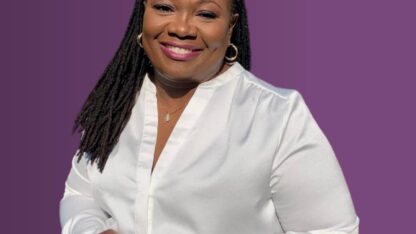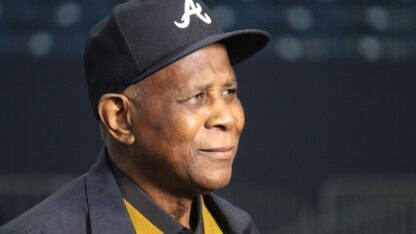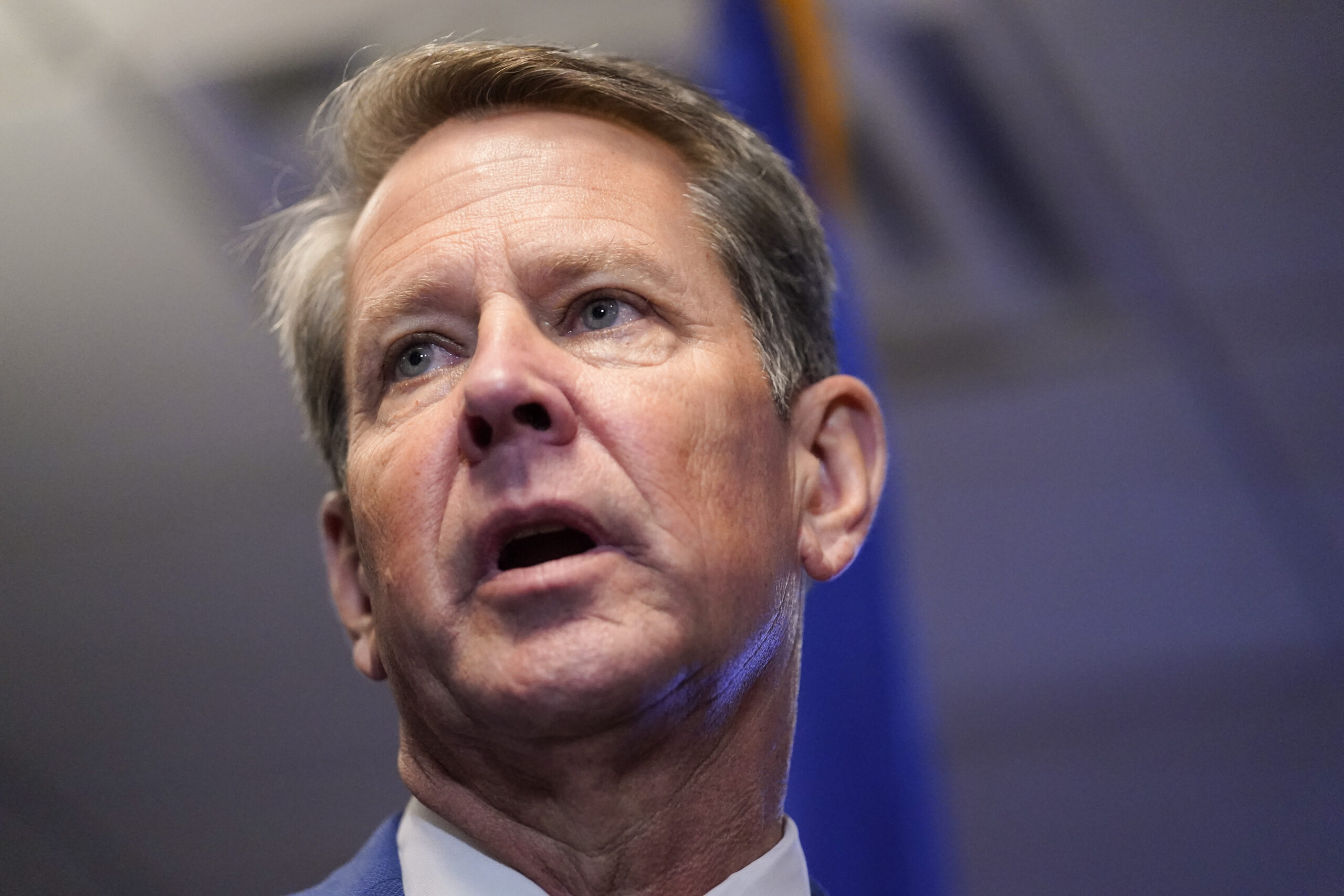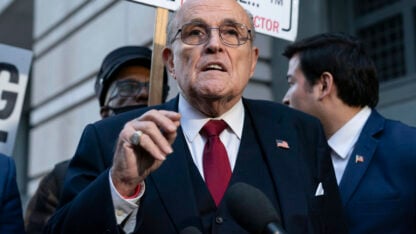A young woman in a powder blue sweater glances up dreamily from a book she’s perusing on a pristine campus lawn.
Four impossibly strong-jawed college men pose jauntily against an autumnal landscape, one with argyle socks showing off a well-turned calf.
These images and aesthetics are the sort one might expect from Ralph Lauren, the billion-dollar brand associated with prepster chic. But these pictures represent a new collection the company developed with historically Black Morehouse College and Spelman College for a limited release on March 29. It celebrates an extensive history of elite Black collegiate style.
“The white patchwork eyelet and silk wrap dresses, which anchor the Spelman collection, symbolize the highly anticipated white attire ceremony, marking students’ induction into the college,” the company explains in a press release. “Similarly, the wool flannel blazer serves as an homage to the Morehouse blazer, a garment traditionally bestowed to students during their first days on campus.”
The campaign is Ralph Lauren’s first with an entirely all-Black cast: creative directors, cinematographers, models (including students, faculty and alumni at both institutions) and the photographer, Nadine Ijewere.
“There are those who might look at this collection and see it as an anachronism at a time when track pants and leggings are as dressed up as many people want to be,” noted Washington Post fashion critic Robin Givhan in a lengthy analysis of the collection. “There’s a polish to these images that may feel stilted at a time when improvisation is valued. The entire project is a risk in an era when social media watchdogs are always on the prowl for missteps.”
Social media watchdogs never sleep, and Twitter immediately did what it does, with concerns raised around cultural appropriation, respectability politics, the glamorization of Jim Crow-era fashion and the responsibilities of corporations when they step into Black spaces, such as the historically Black colleges and universities (HBCUs).
“It’s important to have those types of tensions and it’s absolutely important for us to have that type of critique,” says David Wall Rice, a Morehouse College psychology professor who consulted on (and appeared in) the Ralph Lauren campaign. “We’re in an important partnership, with a multibillion dollar corporation that really is an aspirational brand. So, it’s something that does not necessarily speak to the least of us, or the marginalized among us.”
What this campaign emphasizes, Rice says, is one part of a complex history of Black expression, one that Ralph Lauren himself was completely unaware of until just a couple of years ago, when the 82-year-old took part in a series of company-wide conversations about race in 2020. He found himself talking with a young designer named James Jeter, whose association with the company began right before college, when he worked as a salesperson in one of its stores.
“As a student at Morehouse, my chapter advisor would take us through these old yearbooks from the 1920s and ’30s to show us some of the earlier chapter memories from our fraternity,” Jeter told NPR. “And I couldn’t help but see all the beautiful images from the ’20s, ’30s and ’40s of the students within those yearbooks. I presented those images to Ralph and he had not been aware of that history from HBCUs and had not seen those photos before. And he was immensely inspired by what was shown, and really, from that point empowered me to take the lead on making this a collection and presenting this to the world.”
Jeter worked closely to develop the new collection with Dara Douglas, a Spelman College graduate who directs “inspirational content” at the Ralph Lauren Library.
“When Mr. Lauren started his career,” Douglas points out, “People questioned his ability to even use this kind of iconography supposedly just associated with this WASP-y ideal.”
Lauren, who was born Ralph Lifshitz in the Bronx, himself had a complex cultural relationship with the monied Mayflower aesthetic his brand has tirelessly promoted, she says. “Him being a kid from the Bronx who didn’t go to Princeton, didn’t go to Yale. So it’s interesting that the conversation is coming back up again with this collection.”
It’s no surprise to Professor Adrienne Jones that this conversation has prompted pushback and dialogue. She teaches fashion at Pratt Institute, where she curated an exhibition called Black Dress, about the history of Black design.
“There will always be a lot of complaints when it’s a white brand telling a Black story,” she says. But it’s meaningful, she says, because of restrictions on Black history and stories from schools beleaguered by complaints about critical race theory, for Ralph Lauren’s giant global company to make space for its Black designers, archivists and executives to explore Black style and its implications.
“What did being an educated Black professional mean in the ’20s and ’30s?” she says. “To tie together black history along with black fashion history, with a brand that is known for their take on Americana — I think it’s a great step in this complicated, difficult conversation. We’re going to need to do it together.”
Black people have always looked great, Jones adds firmly, whether or not they attended Spelman or Morehouse, and there was nothing in the collection she hadn’t seen before. And while Ralph Lauren is one of the richest people in America, with a company that earned an estimated $6 billion dollars in 2018, Jones notes that this campaign made much of a $2 million dollar donation last year for student scholarships at 12 HBCUs, including Spelman and Morehouse, through the United Negro College Fund.
Consider Jones unimpressed. “If you say $2 million per semester per school,” she says. “Now you’ve got my attention.”
Copyright 2022 NPR. To see more, visit https://www.npr.org.
9(MDAxODM0MDY4MDEyMTY4NDA3MzI3YjkzMw004))
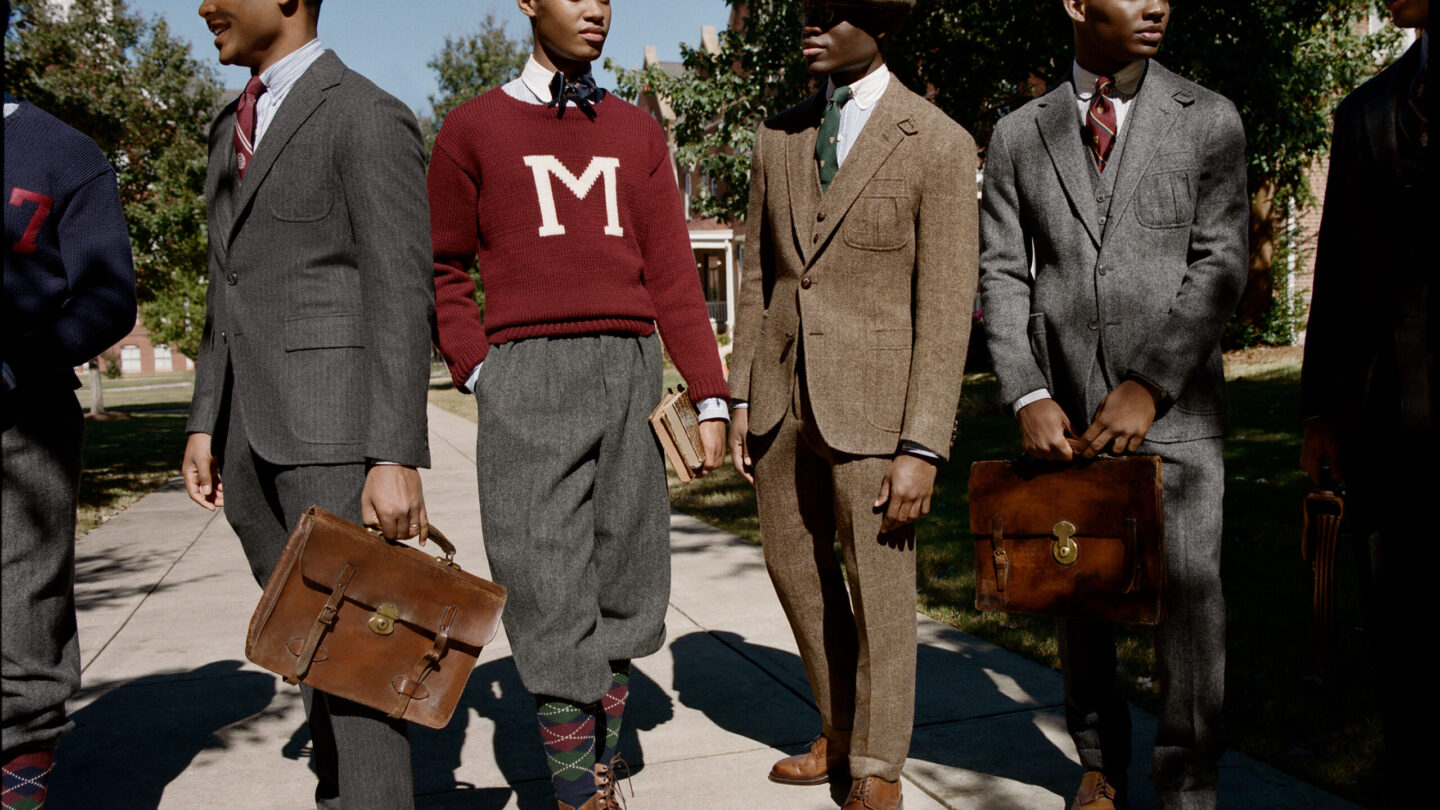
9(MDAxODM0MDY4MDEyMTY4NDA3MzI3YjkzMw004))
